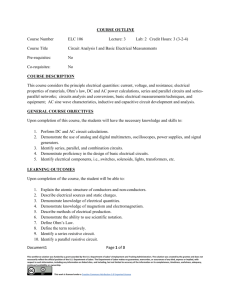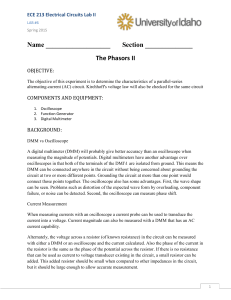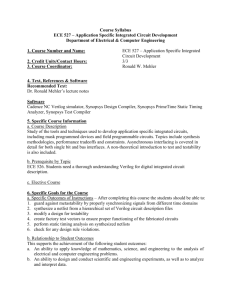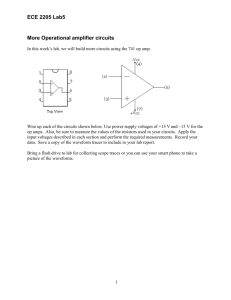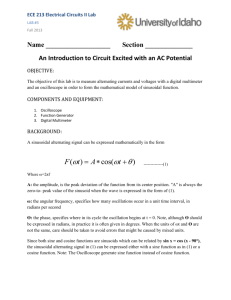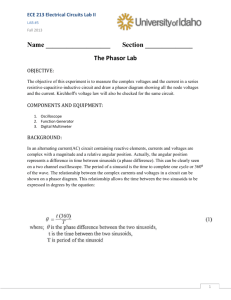Complex Power
advertisement
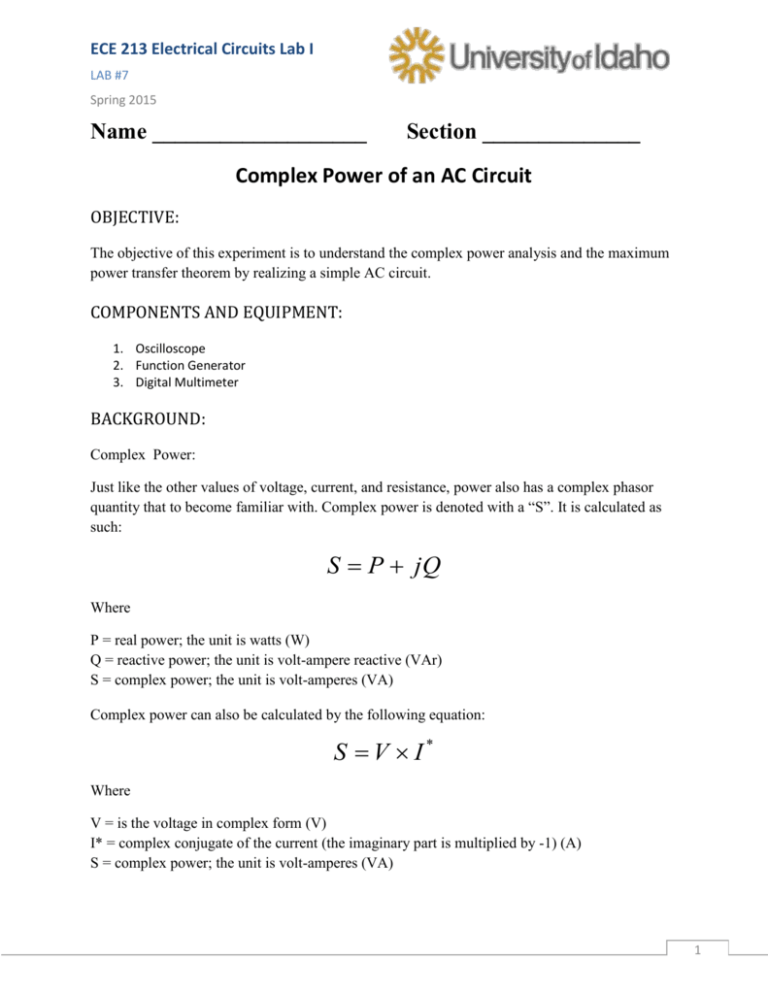
ECE 213 Electrical Circuits Lab I LAB #7 Spring 2015 Name ___________________ Section ______________ Complex Power of an AC Circuit OBJECTIVE: The objective of this experiment is to understand the complex power analysis and the maximum power transfer theorem by realizing a simple AC circuit. COMPONENTS AND EQUIPMENT: 1. Oscilloscope 2. Function Generator 3. Digital Multimeter BACKGROUND: Complex Power: Just like the other values of voltage, current, and resistance, power also has a complex phasor quantity that to become familiar with. Complex power is denoted with a “S”. It is calculated as such: S P jQ Where P = real power; the unit is watts (W) Q = reactive power; the unit is volt-ampere reactive (VAr) S = complex power; the unit is volt-amperes (VA) Complex power can also be calculated by the following equation: S V I* Where V = is the voltage in complex form (V) I* = complex conjugate of the current (the imaginary part is multiplied by -1) (A) S = complex power; the unit is volt-amperes (VA) 1 ECE 213 Electrical Circuits Lab I LAB #7 Spring 2015 The power triangle can be drawn as below: Figure 1 - Power Triangle The power factor is very important in power systems because it indicates how closely the effective power equals the apparent power. Power factors near one are desirable. The definition: Example 2 ECE 213 Electrical Circuits Lab I LAB #7 Spring 2015 Maximum Power Transfer Theorem: The maximum power transfer theorem states that, to obtain maximum external power from a source with a finite internal resistance, the resistance of the load must be equal to the resistance of the source as viewed from the output terminals. The theorem results in maximum power transfer, and not maximum efficiency. If the resistance of the load is made larger than the resistance of the source, then efficiency is higher, since a higher percentage of the source power is transferred to the load, but the magnitude of the load power is lower since the total circuit resistance goes up. The theorem can be extended to AC circuits which include reactance, and states that maximum power transfer occurs when the load impedance is equal to the complex conjugate of the source impedance. PROCEDURE: 1. Turn on all equipment to be used in this experiment as early as possible and leave it on. This will allow the instruments to warm up and stabilize. 2. In figure 2, the voltage source is 3Vrms operating at 1200Hz. Figure 2 - RL circuit Vin = the internal generated voltage of the Function Generator set it to 3Vrms at 1200 Hz. R = 1kΩ L = 210mH 3 ECE 213 Electrical Circuits Lab I LAB #7 Spring 2015 Draw the actual circuit below which includes the source resistance and internal resistance of the inductor (include all the component values). 3. Measure the component value Component Measurement The nominal values of the components are given under the figure. As usual in this course these values need not be matched exactly but they will be measured closely. Place the measured values in the table below. Component RS (Function generator resistance) R1 RL (internal resistance of L1) Value 4. Calculate the voltage at each node and the circuit current. 5. Set up the circuit shown in Figure 2. 6. With the circuit connected to the function generator adjust the terminal voltage of the function generator to 3.00 volts rms. Use the oscilloscope to set the frequency to 1200 Hz. 4 ECE 213 Electrical Circuits Lab I LAB #7 Spring 2015 7. Use digital scope, measure the magnitude and phase for each node. 8. Use digital scope, measure the magnitude and phase for each component. Make sure one side of the component is grounded when measuring the component magnitude and phase. Result and Analysis 1. Using the raw data in Tables D-2 and D-3 find the measured values of the voltages and current in Figure I. The magnitudes measured with the digital multimeter are probably more accurate than those measured with the oscilloscope. Potential Node 1 Measured Calculated Magnitude Phase Angle Magnitude Percent Error Phase Angle Magnitude Phase Angle NA NA Node 2 Voltage Across R (VR) Current Across R (IR) Voltage Across L (VL) Current Across L (IL) 5 ECE 213 Electrical Circuits Lab I LAB #7 Spring 2015 2. Calculate the complex power from the result. Use RMS magnitude. Use Rms value for power! Calculated value Measured value PR = |I|^2*R2 jQL = |I|^2*|ZL|*j S = VS*I* SUM (S-PR-jQL) 3. What is the power factor of the circuit? 4. Draw a power triangle for the circuit of Figure 2 6


